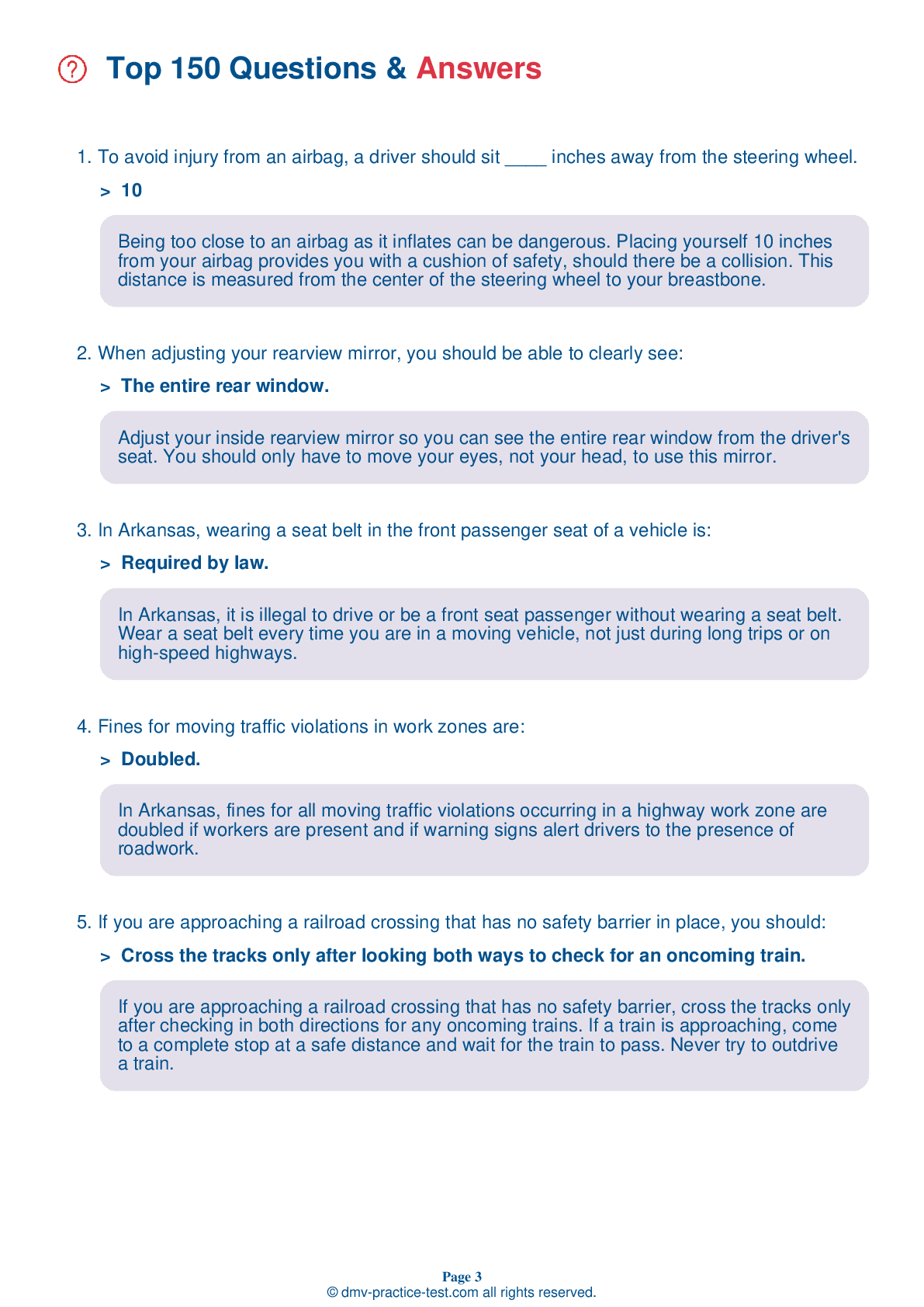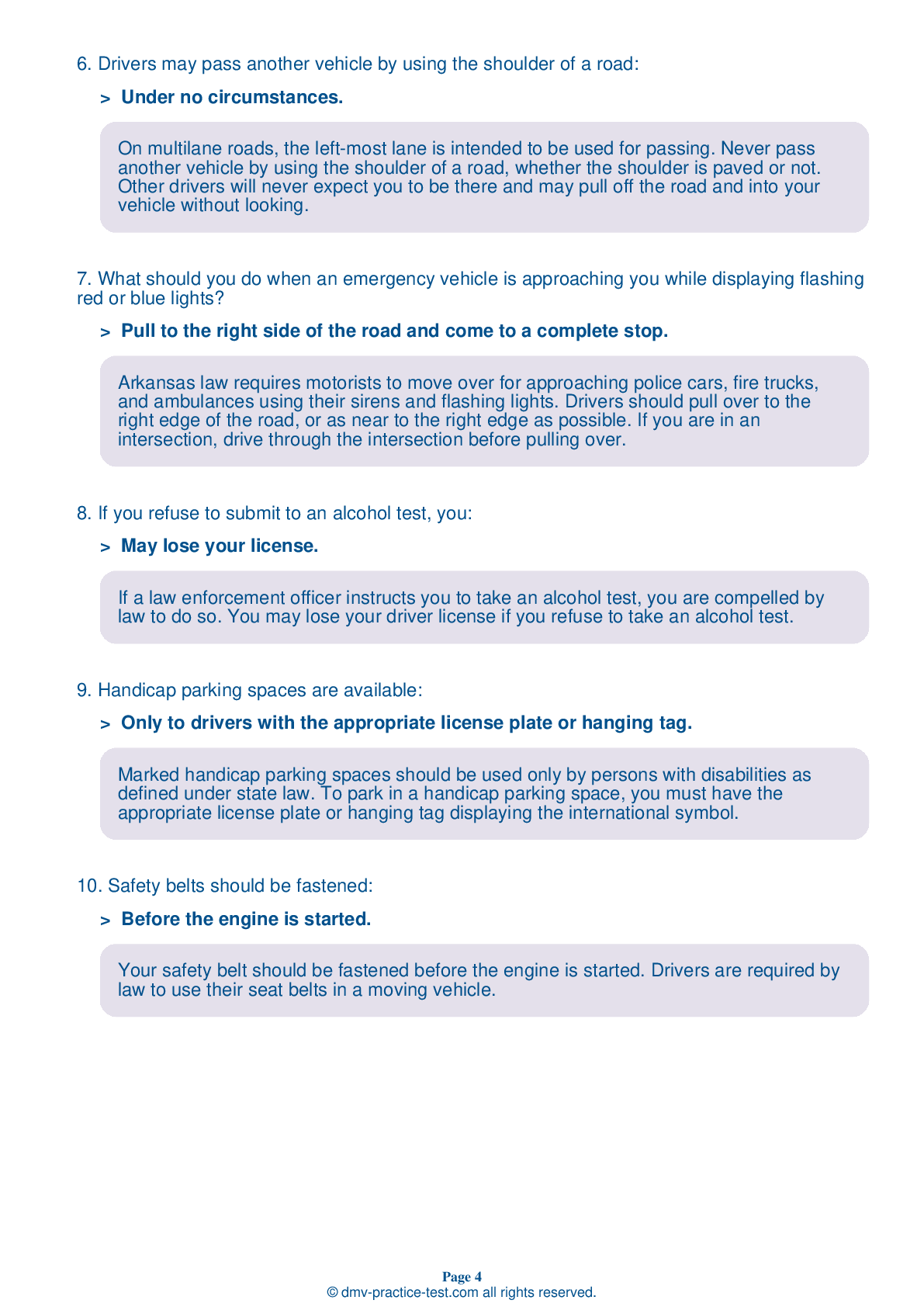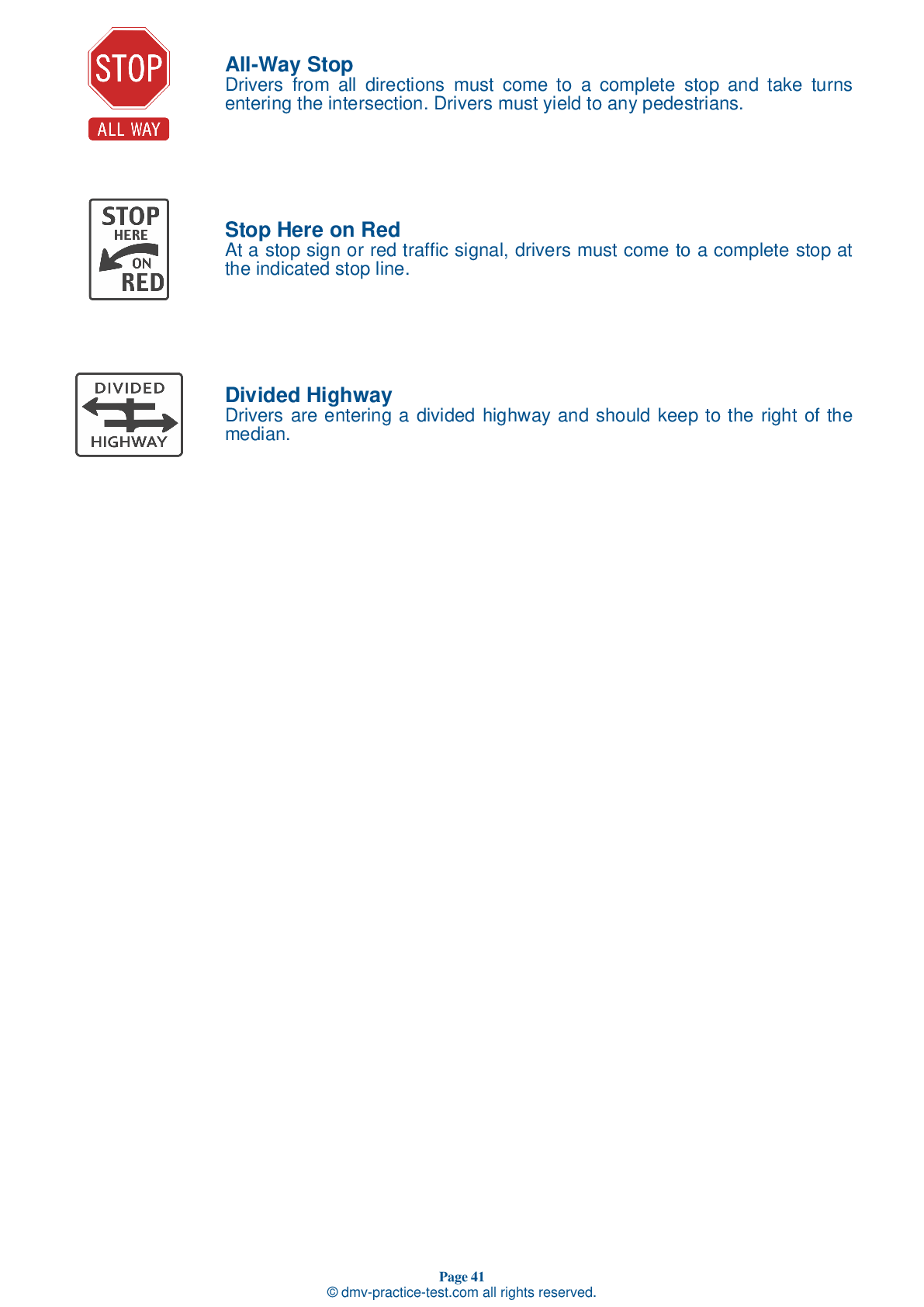FREE Arkansas DMV Practice Test #12 Page 3 of 3
This Arkansas DMV practise tests was recently updated for January 2026. It includes questions based on the 2026 Arkansas Driver Handbook's most essential traffic signs and restrictions. Use actual questions that are very similar (often identical!) to the DMV driving permit test and driver's licence exam to study for the DMV driving permit test and driver's licence exam.
To help you remember the concepts, each practise test question includes a recommendation and explanation. The written component of the official DMV test will include questions about road rules, traffic signs, and driving statutes, as well as information from the Driver Handbook.
To receive the required passing grade, you must correctly answer 20 out of 25 questions. Take our DMV practise exam to help you prepare for your Arkansas instruction permit or driver's licence.
The DMV exam is available in multiple languages.
Using any form of testing aid will result in an automatic fail, and the DMV may take further action against your driver's licence, so don't do it.
17 . What should you do when an emergency vehicle is approaching you while displaying flashing red or blue lights?
Arkansas law requires motorists to move over for approaching police cars, fire trucks, and ambulances using their sirens and flashing lights. Drivers should pull over to the right edge of the road, or as near to the right edge as possible. If you are in an intersection, drive through the intersection before pulling over.
18 . A broken yellow line between two lanes of traffic means:
Dashed yellow lines separate single lanes of traffic moving in opposite directions. Passing is allowed when there is no oncoming traffic in the passing lane.
19 . If your car begins to skid out of control, you should:
If your vehicle begins to skid, stay off the brakes. Continue to correct your steering until the vehicle is back under your control and moving safely down the road.
20 . You are driving on a city street and see an emergency vehicle with flashing lights behind you. What should you do?
You must yield the right-of-way to any emergency vehicle that is using its siren and lights. Drive to the right edge of the road and stop until the emergency vehicle has passed. If you are within an intersection, drive through the intersection first and then stop.
21 . When adjusting your rearview mirror, you should be able to clearly see:
Adjust your inside rearview mirror so you can see the entire rear window from the driver's seat. You should only have to move your eyes, not your head, to use this mirror.
22 . An orange and red triangular sign on a vehicle always means:

Slow-moving vehicles, such as farm tractors, road maintenance vehicles, and animal-drawn carts, display an orange and red triangle on the back.
23 . A steady red arrow displayed on a traffic light means:
If a traffic signal is displaying a steady red arrow, traffic in the indicated lane may not proceed in the direction shown by the arrow. Drivers must come to a full stop and wait for a green signal to proceed.
24 . Trucks' blind spots are:
A truck's blind spots are much larger than a smaller car’s blind spots. The driver cannot see your car behind their vehicle and you can't see what’s happening in traffic ahead if you're driving too closely behind the truck. Whether you are driving behind or to the side of the truck, if you can’t see the driver’s face in their side view mirror, then they can’t see you.
25 . Use your headlights on rainy, snowy, or foggy days:
On rainy, snowy, or foggy days, it may be difficult for other drivers to see your vehicle. Under these conditions, headlights make your vehicle easier to see. If the weather requires you to turn on your windshield wipers, you must also turn on your low beam headlights.
See the exact questions that will be on the 2026 Arkansas DMV exam.
99.2% of people who use the cheat sheet pass the FIRST TIME
LT gives us an insight on how the cheat sheet provided her with all the study questions she needed before taking her test.
Joe initially studied with the handbook and failed his test, he eventually found us online, studied and pass his test the first time around.



